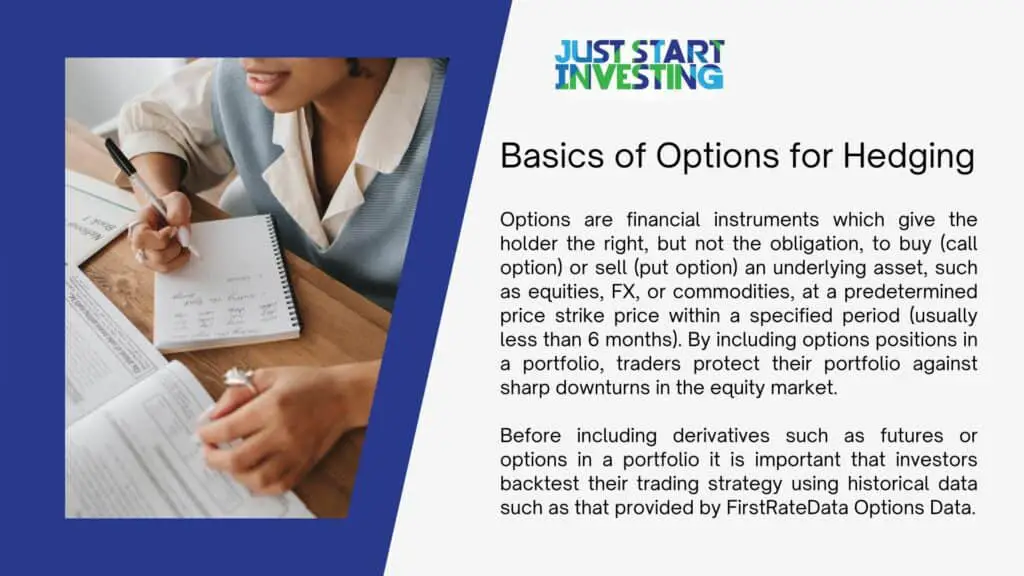As well as being useful trading instruments, options can be used to hedge and manage the risk in an investor’s stock portfolio.
Basics of Options for Hedging
Options are financial instruments which give the holder the right, but not the obligation, to buy (call option) or sell (put option) an underlying asset, such as equities, FX, or commodities, at a predetermined price strike price within a specified period (usually less than 6 months). By including options positions in a portfolio, traders protect their portfolio against sharp downturns in the equity market.
Before including derivatives such as futures or options in a portfolio it is important that investors backtest their trading strategy using historical data such as that provided by FirstRateData Options Data.

Using Put Options for Downside Protection
Buying put options is the simplest and most common strategy for hedging against stock value declines. By purchasing put options on individual stocks or a stock market index, investors can set a “floor” for their portfolio’s value. If the market falls, gains from the put options can offset losses.
Example: Suppose you have a $100,000 stock portfolio, including Tesla (TSLA) shares. In early 2023, expecting market volatility, you could purchase put options on the S&P 500 index with a strike price 5% below the current level. When the market drops due to economic uncertainties, the value of your Tesla shares decreases. However, the value of your put options increases, cushioning the overall portfolio loss.
Covered Call Strategy
While put options guard against downside risk, covered call strategies can help you earn extra income from stocks you own. In a covered call strategy, you sell call options on stocks in your portfolio, generating income from the option premiums. However, this strategy may limit potential gains if the stock price exceeds the strike price.
Example: Suppose you own 100 shares of Apple Inc. (AAPL), trading at $150 per share. You sell covered call options with a strike price of $160. If Apple’s stock price stays below $160, you keep the premium from selling the options. If the stock price goes above $160, you might have to sell your shares at the strike price, missing out on potential gains beyond that point.
Challenges and Considerations
Cost of Options: Buying options requires paying a premium, which can reduce your portfolio returns. For example, during the 2020 market crash, volatility spiked, making option premiums more expensive and increasing the cost of hedging.
Margin Requirements: Selling options requires posting margin to cover potential losses. For instance, selling covered calls on high-volatility stocks like NVIDIA (NVDA) might require significant capital due to high margin requirements.
Basis Risk: Options might not perfectly match the underlying asset’s movements due to differences in settlement prices. For example, a put option on the S&P 500 index may settle against the average price of the index on expiration day, while your portfolio value is based on closing prices.
Complexity: Options trading can be complex, especially for beginners. Investors need to understand the mechanics of options, various strategies, and potential outcomes. Managing a portfolio with multiple options positions, such as straddles or strangles on stocks like Amazon (AMZN), requires a thorough understanding of these strategies and their implications.
Incorporating options into your investment strategy can help you effectively hedge against potential risks and better manage your stock portfolio. However, it’s crucial to consider the costs, margin requirements, basis risk, and complexity involved to make informed decisions.

Just Start Investing is a personal finance website that makes investing easy. Learn the simple strategies to start investing today, as well as ways to optimize your credit cards, banking, and budget. Just Start Investing has been featured on Business Insider, Forbes, and US News & World Report, among other major publications for its easy-to-follow writing.
